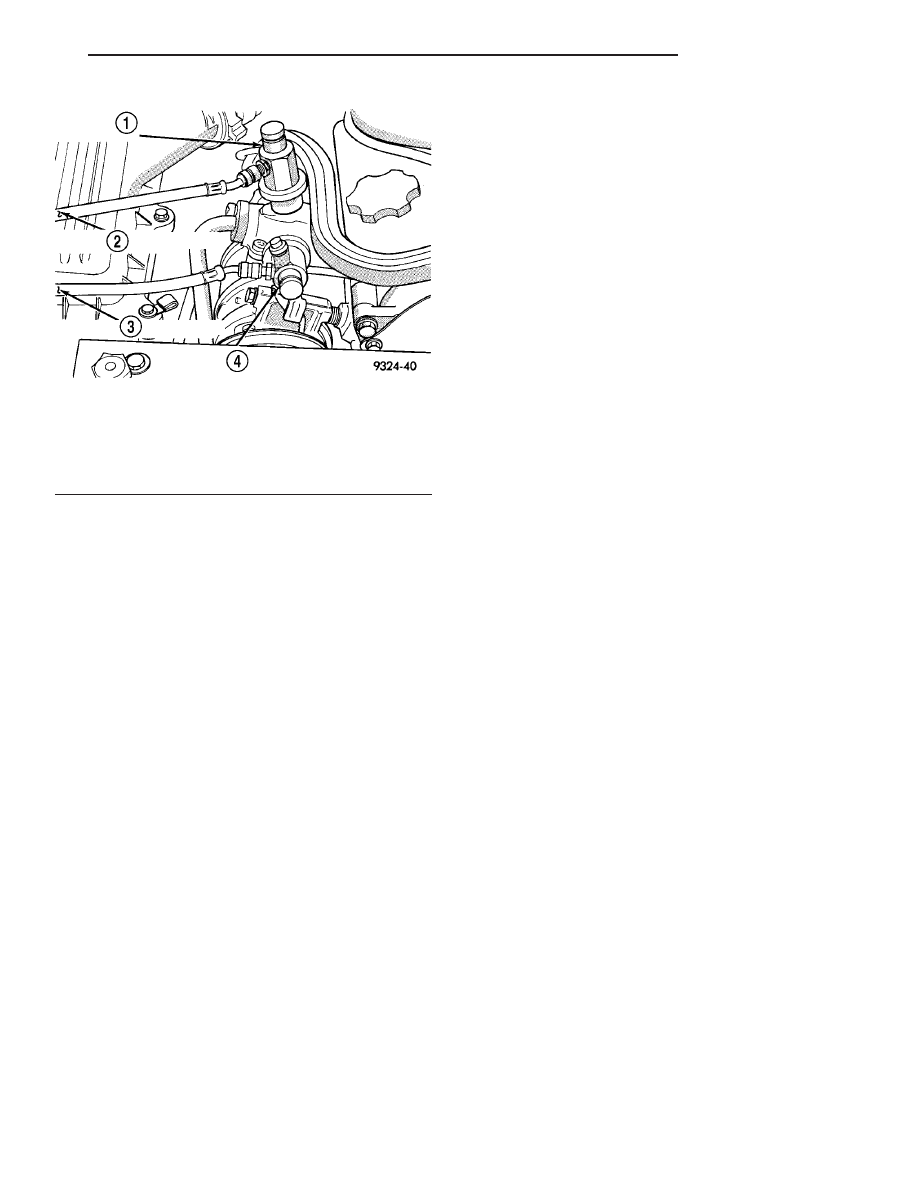Chrysler 300M, Dodge Interpid. Manual - part 400

STANDARD PROCEDURE - REFRIGERANT
SYSTEM CHARGE
WARNING: REVIEW THE WARNINGS IN THE FRONT
OF THIS SECTION BEFORE PERFORMING THE
FOLLOWING OPERATION. (Refer to 24 - HEATING &
AIR CONDITIONING/PLUMBING - WARNING)
After the refrigerant system has been tested for
leaks and evacuated, a refrigerant charge can be
injected into the system. (Refer to 24 - HEATING &
AIR CONDITIONING/PLUMBING - SPECIFICA-
TIONS - CHARGE CAPACITY)
A R-134a refrigerant recovery/recycling/charging
station that meets SAE Standard J2210 must be
used to charge the refrigerant system with R-134a
refrigerant. Refer to the operating instructions sup-
plied by the equipment manufacturer for proper care
and use of this equipment.
SPECIFICATIONS
CHARGE CAPACITY
NOTE: Always refer to the vehicle’s underhood
HVAC Specification label for the correct charge
specifications.
A/C COMPRESSOR
DESCRIPTION
The air conditioning system uses a Nippondenso
10PA17 ten cylinder, double-acting swash plate-type
compressor on all models. This compressor has a
fixed displacement of 170 cubic centimeters (10.374
cubic inches), and has both the suction and discharge
ports located on the cylinder head. A label identifying
the use of R-134a refrigerant is located on the com-
pressor. This compressor uses an aluminum swash
plate, teflon coated pistons and aluminum cylinder
walls. One-way check valves are used to regulate
refrigerant flow through the compressor.
CAUTION: A 10PA17 R-12 compressor looks identi-
cal to a 10PA17 R134a and will bolt up to this vehi-
cle.
It
is
extremely
important
that
a
R-134a
compressor is identified prior to using compressor
in question. Check tag located on compressor for
model number.
OPERATION
The compressor is driven by the engine through an
electric clutch, drive pulley and belt arrangement.
The compressor is lubricated by refrigerant oil that is
circulated throughout the refrigerant system with the
refrigerant.
The compressor draws in low-pressure refrigerant
vapor from the evaporator through its suction port. It
then compresses the refrigerant into a high-pressure,
high-temperature refrigerant vapor, which is then
pumped to the condenser through the compressor dis-
charge port.
The compressor cannot be repaired. If faulty or
damaged, the entire compressor assembly must be
replaced. The compressor clutch, pulley and clutch
coil are available for service.
DIAGNOSIS AND TESTING - COMPRESSOR
NOISE
Excessive noise that occurs when the air-condition-
ing is being used may be caused by:
• Loose Bolts
• Mounting Brackets
• Loose Compressor Clutch
• Excessive High Refrigerant Operating Pressure
Verify the following before compressor repair is
performed:
(1) Compressor drive belt condition
(2) Proper refrigerant charge
(3) Thermal expansion valve (TXV) operating cor-
rectly
(4) Head pressure is normal
Fig. 2 GAUGE SET OR REFRIGERANT RECOVERY
MACHINE HOOKUP (3.2 / 3.5L)
1 - HIGH SIDE CONNECTOR
2 - TO MANIFOLD GAUGE SET
3 - TO MANIFOLD GAUGE SET
4 - LOW SIDE CONNECTOR
LH
PLUMBING
24 - 31
PLUMBING (Continued)